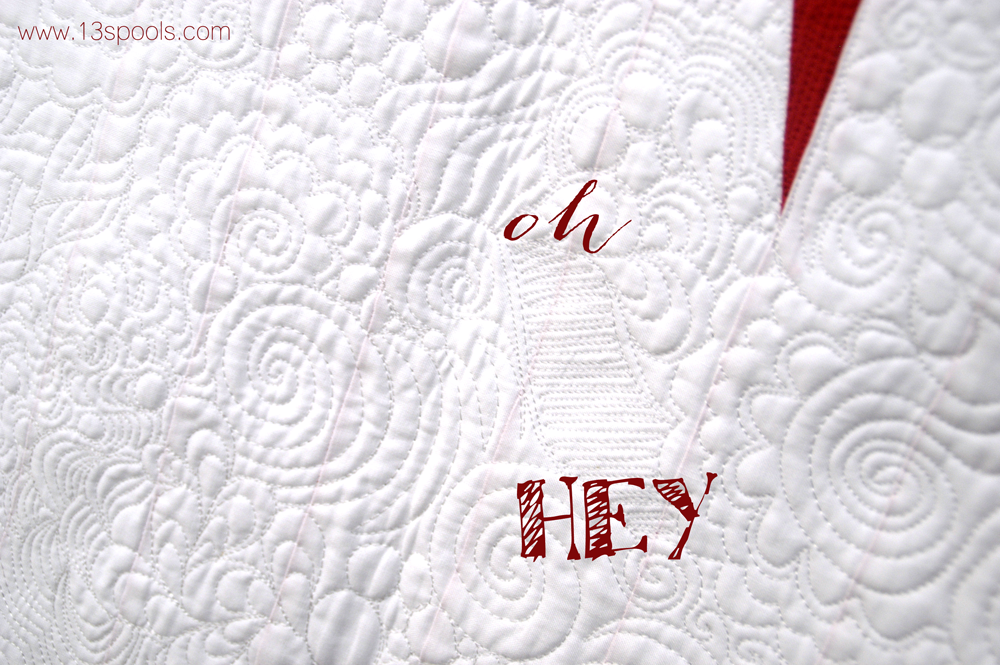Mistakes & All
The other week, I heard one of the leaders of our local (private) school talking about its financial state. "We have a mortgage to pay. We could wish it away - but this is part of our story. It's part of who we are." I loved that mentality. Instead of being negative, he simply identified a struggle, and then embraced it.
I've frequently heard in the (quilt) blogging world that we don't need to point out every little mistake in our work. Nobody else would notice them if we didn't say anything, so just keep mum!
I agree with this - but only to a certain extent. There is little point in sharing a finished quilt and methodically listing off every little error within it. On the other hand, if a mistake is part of that quilt's story, why hide it?
When I was working on the Dyed quilt, I quilted a section of the white and didn't like part of it. This densely quilted section, right here:
I wasn't sure what to do about it, but knew I really disliked it. I eventually decided I would rip it all out, but since I had no desire to sit there and rip out micro, matchstick quilting, I kept quilting. I could rip it out later.
Two of my quilt guild friends came over and we talked about it. "Yeah," one of them said, "Now that you mention it, my eye does go right to it. I could see why you want to take it out."
And you know what? That gave me peace with it. Not because I decided it was fine after all, but because it wasn't just me, going crazy by myself thinking it didn't look great. It was an imperfection that wasn't only in my head - it was real. It was acknowledged. Normally, quilters are so positive and great at building each other up, that we end up belittling the existence and importance of these mistakes.
When I point out problems, I'm not fishing for compliments. I don't want my friends to be worried about hurting my feelings. I want to critically discuss what's going on. These mistakes are important to me. I want them to first acknowledge the issue, then talk about whether or not it's bothersome. If my peers always immediately jump to "No one will notice that!", then I'll never know if that's true, or if they're just saying it. An open, evaluative discussion gives me perspective, and this perspective helps me decide whether or not it's important to me to go back and rework things.
I ended up leaving it in. "Oh, so you didn't rip that part out?" my friend said the next time I saw her.
"No, I still don't like it, but really didn't feel like taking it out, so...I just left it!" And that was that. I don't look at it and feel annoyed, like I did before we talked about it. It's not perfect. And that's ok - because it's part of the story. It's been acknowledged, and now I can move on.
***

I encourage you to take the time to link up a blog post or Instagram photo sharing a quilt you've made, or are working on currently, with a mistake or area that's bothering you. Let's talk about these problem areas to help you decide how they fit into the story of your project - even if that means leaving them in.
This post is part of my Omitted series. To see all of these posts, go here.


